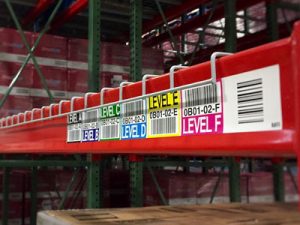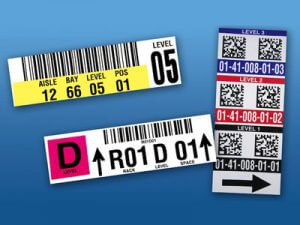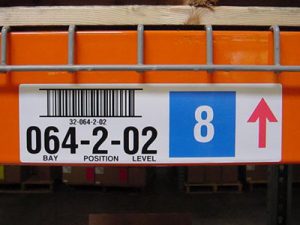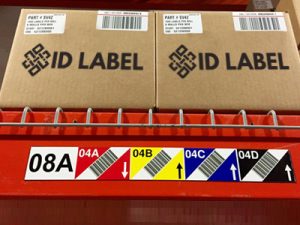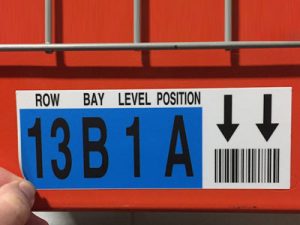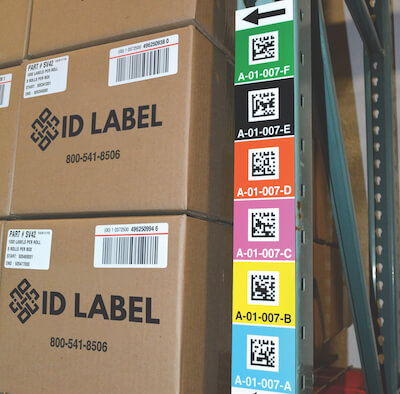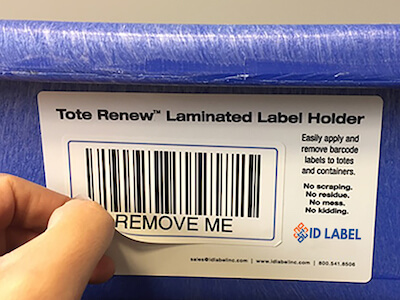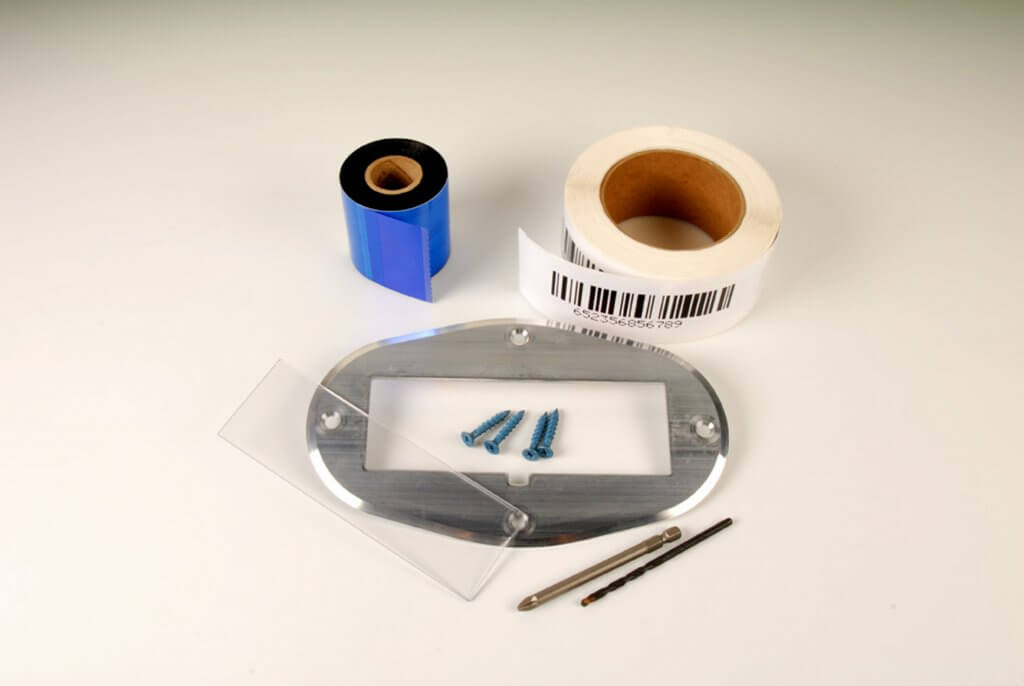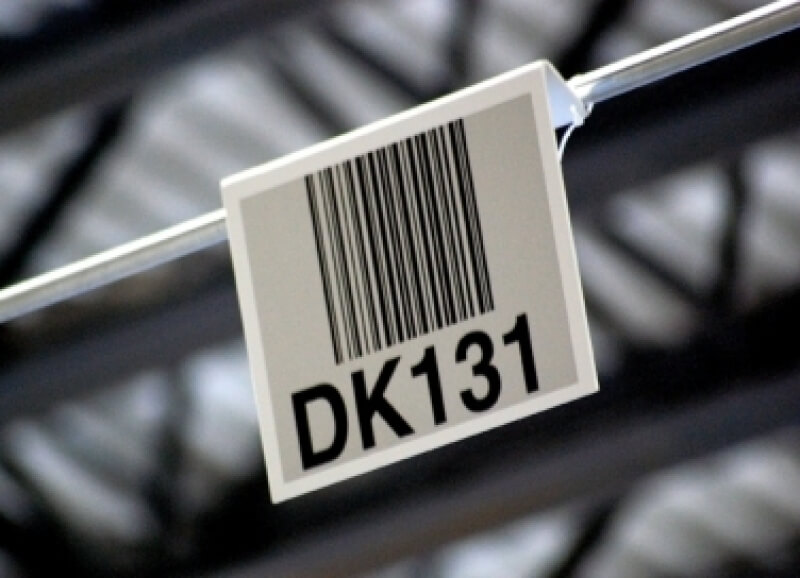Common Types of Warehouse Labels
Barcode Labels Play a Critical Role in Today’s Smart Warehouse
Barcode labels are an important part of an efficiently run warehouse, whether the facility is a manufacturing operation, distribution center or third-party logistics fulfillment center.
“Labels keep a warehouse organized,” said Scott Bender, vice president of sales at ID Label. “They help to track and manage inventory, so warehouse operators know exactly where raw goods, pallet loads, or individual products are located. They facilitate timely shipping and receiving. And in e-commerce facilities, labels are essential to fulfilling orders correctly, which reduces returns and lowers operational costs.”
Warehouse labels can also play an integral role in your organization’s 5S program. They keep areas organized to help eliminate the inefficiencies and organizational waste that the 5S methodology was established to counter.
In this post, we’ll look at some of the most common types of labels used in today’s smart warehouses.
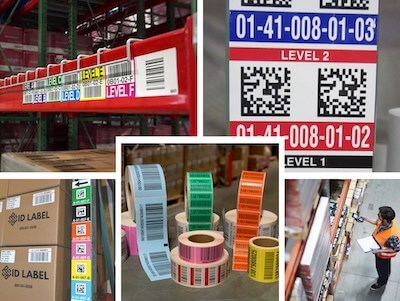
 “Labels keep a warehouse organized. They help to track and manage inventory, so warehouse operators know exactly where raw goods, pallet loads, or individual products are located.”
“Labels keep a warehouse organized. They help to track and manage inventory, so warehouse operators know exactly where raw goods, pallet loads, or individual products are located.”
– Scott Bender, ID Label
Warehouse LPN/Pallet Labels
LPN labels – also known as license plate numbers – are preprinted, sequential barcode labels used to track moveable units in a warehouse. This might be a pallet, carton or bin.
“LPN labels work in conjunction with a warehouse management system to track these items from the moment they enter the warehouse until the time they leave,” Bender said. “A worker can scan the unique barcode to pull up a host of information about the item, such as quantity, pertinent dates and lot numbers.”
LPN labels are typically manufactured with paper stock, preprinted on rolls. Adhesives can accommodate a variety of warehouse applications and temperatures.
ID Label custom designs its LPNs to match each client’s requirements. “We offer a variety of materials, sizes and colors,” Bender said. “For instance, corner-wrap pallet labels are very popular,” he said. “Each label contains two duplicate barcodes, which makes it easy for workers to see and scan.”
Warehouse Rack Beam Labels
The most common type of warehouse label is found on rack beams. These labels mark each rack bay location and are used to identify products for storing, picking and inventory management. They typically include a one- or two-dimensional barcode image and human-readable letters and numbers.
Rack labels are commonly manufactured using polyester or polypropylene stocks, which are more resistant to tearing and fading. These stocks also enable high-quality imaging to facilitate accurate scans. And they can incorporate retroreflective graphics for long-range scanning.
Common rack label features and options include:
- Permanent or temporary (repositionable) adhesives, e.g., Clean Release™
- Freezer-grade labels, e.g., Arctic Xtreme™
- Magnet-backed labels
- Ultra-durable labels, e.g., BullsEye™
- Multilevel labels
- Color-coded labels
- Rack label cover-up solutions, e.g., Beam Renew™
“In a multilevel rack environment, one option is to place rack location labels beneath each pallet bay on every level,” Bender said. “In this scenario, warehouse operators use cherry pickers or reach forklift trucks to scan labels at each upper-level rack bay location.”
On the other hand, operations with long-range scanners may employ a “person-down” operation where workers remain on the ground while putting or picking inventory into and out of the rack bays. Color-coded labels with multiple barcodes representing each rack level are placed at eye level for workers to scan. Companion labels in matching colors are typically placed at each corresponding bay level to help workers visually identify the correct level and location.
 “Rack labels are commonly manufactured using polyester or polypropylene stocks, which are more resistant to tearing and fading. These stocks also enable high-quality imaging to facilitate accurate scans. And they can incorporate retroreflective graphics for long-range scanning.”
“Rack labels are commonly manufactured using polyester or polypropylene stocks, which are more resistant to tearing and fading. These stocks also enable high-quality imaging to facilitate accurate scans. And they can incorporate retroreflective graphics for long-range scanning.”
Warehouse Rack Upright Labels
Upright warehouse racks often house vertical location labels (also known as totem labels). A vertical label typically features a grouping of barcodes that contains specific information for each level of racking within a bay in a particular aisle. They are often color coded by level.
Vertical location labels are commonly accompanied by rack location labels – companion labels, in ID Label terminology. These companion labels are used on all rack levels at the physical location to facilitate inventory management and cycle counts. The companion label is also color coded per level to correspond to the colors used on the vertical label.
“If you’re not performing person-up scanning at your locations, vertical location labels are an excellent solution for multilevel warehouse racks,” Bender said. “They eliminate the need for long-range scanning and minimize potential confusion and scan errors.”
Warehouse Tote and Bin Labels
Warehouses commonly store individual products and parts in plastic bins or containers. Like warehouse racks, these bins should be properly identified with barcode labels to help workers easily locate items, fulfill orders and manage product inventory.
Similarly, reusable warehouse totes require proper identification. ID Label’s Tote Renew™ is a laminated label-holding strip that makes it easy to apply and remove barcode labels for all of your containers.
“With Tote Renew, you avoid the challenge and frustration of constantly scraping off old labels or the mess of stacking new labels on top of old ones,” Bender said.
Warehouse Floor Labels
Floor labels are sometimes used to identify rack or bulk storage locations. Durability is a key requirement, as these labels are likely to come in daily contact with lift trucks, pallets, foot traffic and more.
ID Label’s floor plate location labeling kits are a durable, viable option for identifying bulk storage locations in a multitude of environments and surfaces, especially when overhead signage is not an option.
Warehouse Bulk Storage Identification
Bulk storage areas in a warehouse or DC are where certain equipment, supplies or raw goods are stored as part of a facility’s fulfillment or manufacturing operations.
Properly identifying bulk storage areas can be a little more challenging than simply applying barcode labels to rack bay locations.
“Overhead signs are highly recommended for identifying and managing bulk storage inventory,” Bender said. “They typically contain a barcode image and human-readable numbers or letters.”
For operations that can accommodate long-range mobile scanning, retro-reflective graphics are used for optimum scan accuracy.
Many of today’s scanners can read 1D or 2D barcode images up to 50 feet away. This means workers can quickly and safely scan bulk locations without leaving their lift trucks.

The ID Label Advantage
ID Label manufactures extremely durable warehouse rack and bin location labels. Our materials have been tested and used in warehouse operations around the globe.
We also provide warehouse signage and turnkey nationwide installation services to provide a complete solution to our many clients who rely on us for all their warehousing needs.
Interested in learning more? Contact us today.
Tags
Recent Posts
- How to Remove a Rack Label: A Step-by-Step Guide
- Eliminate the Hassle of Removing Outdated or Damaged Warehouse Labels
- The Essential Role Labeling Plays in Food Traceability
- Ask the Expert: Should I Choose Paint or Tape to Mark My Warehouse Floors?
- Scott Bender Joins ID Label as Vice President of Sales

